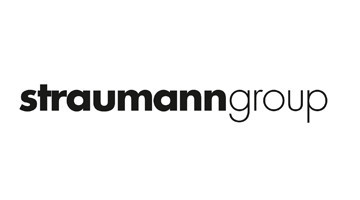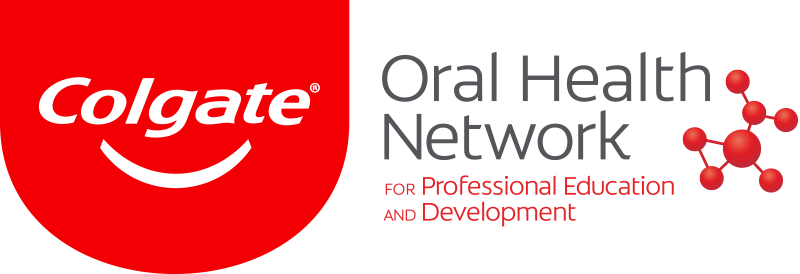Different materials and treatment options are available in aesthetic and restorative dentistry for the anterior region. The conventional protocol, including an analogue impression with polyether or polyvinylsiloxane, a master cast and die fabrication, waxing and pressing of ceramic materials, requires exceptional skills and is technique-sensitive. Intraoral scanning and digital impression taking provide an accurate alternative method for transferring information from the mouth to the dental laboratory. [1] The digital file is always on the computer and can be immediately processed or at any time, unlike with the conventional procedure.
Regarding materials, various newer products, such as pressed or milled ceramics, offer enhanced strength and functionality; however, in thinner dimensions, they lack the inherent aesthetic beauty of conventional materials such as feldspathic porcelain. As patient demand for better aesthetics has increased in recent years so too has the need for restorative materials that closely mimic the patient’s natural dentition. Initially used for the creation of porcelain dentures, feldspathic porcelain has emerged as the premier aesthetic material for custom veneer restorations. In recent years, the use of hand-layered powder/liquid feldspathic porcelain has been revived based on its highly aesthetic values and little to no preparation requirements. By keeping preparation to a minimum, less tooth structure is removed and procedures are much less invasive, which is exactly what patients desire. [2]
Fig. 1: Initial photograph of the anterior teeth prior to orthodontic treatment.
Fig. 2a: Anterior teeth after orthodontic treatment.
Fig. 2b: Extraoral photographs after orthodontic treatment.
Fig. 3: Digital smile design indicating crown lengthening of teeth #13, 12, 11 and 21 and restorative treatment of the ten anterior teeth
Fig. 4: Wax-up on the stone model concerning the restorative treatment of the ten anterior teeth.
Fig. 5: Three-dimensionally printed model of the digital smile design planning, bearing a mock-up shell. A cervical opening was introduced for surgical access and guidance for crown lengthening.
Figs. 6a: Intraoral fi t of the surgical guide for crown lengthening.
Figs. 6b: Intraoral fi t of the surgical guide for crown lengthening.
Fig. 7: Periodontal tissue of the anterior teeth six months after crown lengthening.
Fig. 8a: Mock-up silicone index.
Fig. 8b: Intraoral photograph of the mock-up.
Fig. 9a: Preparation through the mock-up.
Fig. 9b: Check of the preparation depth, with the use of the silicone guide, palatal aspect.
Fig. 9c: Final preparation of the teeth.
Fig. 10: Analogue impression with polyvinylsiloxane.
Fig. 11: Digital impression
with TRIOS.
Fig. 12a: Digital planning of the provisional restorations.
Fig. 12b: Provisional restorations intraorally (Telio CAD).
Fig. 13: Analogue workflow (refractory dies, built-up veneers, adjustments, staining/glazing).
Fig. 14: Digital workflow (3-D printed model, CAD/CAM veneers, adjustments, staining/glazing).
Fig. 15a: Feldspathic veneers with try-in paste.
Fig. 15b: CAD/CAM veneers with try-in paste.
Fig. 15c: First quadrant feldspathic veneers and second quadrant CAD/CAM veneers simultaneously with try-in paste.
Fig. 16a: Isolation fi eld and try-in of the fi t of the veneers on teeth #11 and 21.
Fig. 16b: Etching of the enamel for 30 seconds with a 32 % orthophosphoric acid.
Fig. 16c: Application of the bonding agent.
Fig. 16d: Final polymerisation of the veneers.
Fig. 16e: Veneers in situ before finishing and polishing procedures.
Fig. 16f: Final outcome immediately after removal of the rubber dam.
Fig. 17a: Final outcome one week later.
Fig. 17b: Final outcome one week later, frontal view.
Fig. 17c: Lips at rest, exposure of the incisal edges.
Fig. 17e: Extraoral final photographs.
Fig. 18a: Subjective comparison criteria per step between analogue and digital workflows. PVS=polyvinylsiloxane.
Fig. 18b: Laboratory duration per step between analogue and digital workflows. PVS = polyvinylsiloxane.
In contrast, the conventional methods of ceramic fabrication have been described as time-consuming, technique-sensitive and unpredictable owing to the many variables, and thus CAD/CAM may be a good alternative for both dentists and laboratories. [3] CAD/CAM may also reduce the fabrication time of high-strength ceramics by up to 90 per cent. [1] Furthermore, industrially fabricated blocks are more homogenous, with minimal flaws, and CAD/CAM restorations have been found to compare favourably with other restorative options. [4,5]
As far as optical properties and CAD/ CAM are concerned, the fact of complex optical illusion phenomena in anterior aesthetics cannot always be met with monochromatic aesthetic materials without the need for final characterisation by a dental technician. In order to overcome such aesthetic disadvantages of a monochromatic restoration, multichromatic ceramic blocks have been developed to create a 3-D layered structure. These ceramic blocks offer a gradient of chroma from the cervical to the incisal areas that replicate dentine and enamel in the same block. [6-8] The aim of this case report is to compare the analogue versus the digital workflow on ten ceramic veneers in the maxilla, in terms of aesthetic outcome, length of procedures and technical sensitivity for both the dentist and the dental technician.
Case report
A 35-year-old patient presented at the office with the chief desire that the aesthetics in the anterior region be changed (Fig. 1). A diagnostic wax-up was performed, followed by mock-up fabrication, in order to obtain a preliminary visualisation of the final outcome. Orthodontic treatment was proposed in order to align the teeth in a more favourable position for veneers requiring minimal preparation and to reduce the overbite. One year after treatment, the patient returned for the final prosthetic rehabilitation (Figs. 2a & b).
Methods and materials
Digital smile design according to Coachman and Calamita9 was performed, from which a treatment plan of crown lengthening and veneers on teeth #15–25 (Fig. 3) was proposed. A conventional diagnostic wax-up was also produced (Fig. 4). Both digital and conventional mockups were applied, and agreement was attained concerning tooth shapes and proportions. Crown lengthening was performed, guided by the digital mock-up, with the use of an acrylic transparent double crown lengthening guide that indicated the borders of the gingivectomy and alveolectomy needed in periodontal surgery for aesthetic rehabilitation (Figs. 5 & 6). [10]
After six months of tissue stabilisation (Fig. 7), a mock-up was produced with Telio CS C&B (Ivoclar Vivadent) chairside (Figs. 8a & b), and tooth preparations with silicone guides were performed (Figs. 9a–c). Both conventional impressions with polyvinylsiloxane (Fig. 10) and digital impressions (TRIOS, 3Shape) were taken (Fig. 11).
Provisionalisation was executed digitally, using Telio CAD (Ivoclar Vivadent) in the Wieland Select CNC milling machine. The design was performed with the 3Shape DentalDesigner 2015 software (Figs. 12a & b). Two sets of final restorations were fabricated. The set of feldspathic veneers was fabricated on a stone model using IPS Style (Ivoclar Vivadent), while IPS Empress CAD Multi (Ivoclar Vivadent) was used for the digitalset (Figs. 13 & 14). Both sets were examined intraorally with a try-in paste to compare the optical properties of the feldspathic and the CAD/CAM veneers (Figs. 15a–c).
The subjective decision of the clinician and the patient was to cement the feldspathic veneers, owing to slight differences in the length of the central incisors between the two sets. Adhesive procedures followed (Figs. 16a–f), and final intraoral and extraoral photographs were captured one week later (Figs. 17a–e).
Results
Intraoral digital scanning is a perfect alternative clinical procedure compared with the conventional impression technique. The digital planning and mock-up procedure is a powerful communication tool for the dentist, although special skills in using computer software are required. Regarding the laboratory workflow, most of the analogue procedures require more time (refractory dies, built-up veneers, adjustments), except the staining/glazing (Figs. 18a & b). Although the aesthetic outcome of the feldspathic veneers was subjectively chosen in this case, the analogue workflow is much more demanding. The digital approach, because of the reduced difficulty, speed, complexity and patient discomfort, tends to be preferable (Figs. 18a & b).
Conclusion
Knowledge and application of virtual smile design procedures, coupled with innovative dental laboratory technologies, allow dentists to diagnose, plan, create and deliver aesthetically pleasing new dental compositions. Furthermore, advances in CAD/CAM technology have catalysed the development of aesthetic veneer restorations with industrially produced materials possessing superior biomechanical properties and good aesthetics.
Editorial note: A list of references is available from the publisher. This article was published in the Cosmetic dentistry beauty & science No. 1/2018.
Achieving a successful outcome in aesthetic dentistry can be a formidable challenge for all dental practitioners, regardless of their experience level. The ...
The use of digital technologies in dentistry is on the rise, a fact that clinicians Dr Galip Gurel, Dr Stefan Koubi and dental technician Hilal Kuday are ...
COLOGNE, Germany: Since its establishment in 2004, Ray has been dedicated to creating a better world by providing reliable and innovative radiographic ...
A 38-year-old female patient presented to our dental practice complaining of discomfort in the maxillary left area. The clinical examination revealed a ...
In this article, I present a restorative case study that demonstrates how I used the new iTero Element 5D Plus digital scanner at several stages in the ...
This year, the International Dental Show’s (IDS) centenary year, the 40th edition of IDS, the world’s leading trade fair for dentistry, will focus on ...
Planmeca is known for high-tech innovations and continuous product development. The company’s powerful Planmeca Romexis software platform allows all ...
Whether we like it or not, we are embracing the digital era in our brave new world. Many dental practices are now becoming paper-free—a digital ...
Many of the world’s greatest literary achievements were created with a pen or typewriter. And then, along came computers and word processing software such...
A webinar of Align Education’s Digital Excellence Series on exceptional outcomes with a seamless ortho-restorative approach brought together Dr Karla ...
Live webinar
Fri. 26 April 2024
12:00 pm EST (New York)
Live webinar
Mon. 29 April 2024
12:30 pm EST (New York)
Prof. Roland Frankenberger Univ.-Prof. Dr. med. dent.
Live webinar
Tue. 30 April 2024
1:00 pm EST (New York)
Live webinar
Fri. 3 May 2024
1:00 pm EST (New York)
Live webinar
Tue. 7 May 2024
8:00 pm EST (New York)
Live webinar
Thu. 9 May 2024
8:00 pm EST (New York)
Live webinar
Mon. 13 May 2024
9:00 am EST (New York)



 Austria / Österreich
Austria / Österreich
 Bosnia and Herzegovina / Босна и Херцеговина
Bosnia and Herzegovina / Босна и Херцеговина
 Bulgaria / България
Bulgaria / България
 Croatia / Hrvatska
Croatia / Hrvatska
 Czech Republic & Slovakia / Česká republika & Slovensko
Czech Republic & Slovakia / Česká republika & Slovensko
 France / France
France / France
 Germany / Deutschland
Germany / Deutschland
 Greece / ΕΛΛΑΔΑ
Greece / ΕΛΛΑΔΑ
 Italy / Italia
Italy / Italia
 Netherlands / Nederland
Netherlands / Nederland
 Nordic / Nordic
Nordic / Nordic
 Poland / Polska
Poland / Polska
 Portugal / Portugal
Portugal / Portugal
 Romania & Moldova / România & Moldova
Romania & Moldova / România & Moldova
 Slovenia / Slovenija
Slovenia / Slovenija
 Serbia & Montenegro / Србија и Црна Гора
Serbia & Montenegro / Србија и Црна Гора
 Spain / España
Spain / España
 Switzerland / Schweiz
Switzerland / Schweiz
 Turkey / Türkiye
Turkey / Türkiye
 UK & Ireland / UK & Ireland
UK & Ireland / UK & Ireland
 Brazil / Brasil
Brazil / Brasil
 Canada / Canada
Canada / Canada
 Latin America / Latinoamérica
Latin America / Latinoamérica
 USA / USA
USA / USA
 China / 中国
China / 中国
 India / भारत गणराज्य
India / भारत गणराज्य
 Japan / 日本
Japan / 日本
 Pakistan / Pākistān
Pakistan / Pākistān
 Vietnam / Việt Nam
Vietnam / Việt Nam
 ASEAN / ASEAN
ASEAN / ASEAN
 Israel / מְדִינַת יִשְׂרָאֵל
Israel / מְדִינַת יִשְׂרָאֵל
 Algeria, Morocco & Tunisia / الجزائر والمغرب وتونس
Algeria, Morocco & Tunisia / الجزائر والمغرب وتونس
 Middle East / Middle East
Middle East / Middle East
:sharpen(level=0):output(format=jpeg)/up/dt/2024/04/3Shape-charts-sustainable-course-with-release-of-comprehensive-sustainability-report-2023.jpg)
:sharpen(level=0):output(format=jpeg)/up/dt/2024/04/Zumax-Medical-Image-1.jpg)
:sharpen(level=0):output(format=jpeg)/up/dt/2024/04/IDEM-2024-Wraps-up-its-13th-edition-with-record-breaking-success.jpg)
:sharpen(level=0):output(format=jpeg)/up/dt/2024/04/Envista-names-Paul-Keel-new-CEO-1.jpg)
:sharpen(level=0):output(format=jpeg)/up/dt/2024/04/Shutterstock_1698007795.jpg)








:sharpen(level=0):output(format=png)/up/dt/2014/02/Du%CC%88rr_Dental.png)
:sharpen(level=0):output(format=png)/up/dt/2011/07/fdi.png)
:sharpen(level=0):output(format=png)/up/dt/2023/03/ACTEON_NEW-logo_03-2024.png)
:sharpen(level=0):output(format=png)/up/dt/2023/11/Patent%E2%84%A2-Implants-_-Zircon-Medical.png)
:sharpen(level=0):output(format=png)/up/dt/2014/02/Planmeca.png)
:sharpen(level=0):output(format=png)/up/dt/2024/01/ClearCorrect_Logo_Grey_01-2024.png)
:sharpen(level=0):output(format=jpeg)/up/dt/2018/11/Fig.17e-1560x900.jpg)

:sharpen(level=0):output(format=jpeg)/up/dt/2024/04/3Shape-charts-sustainable-course-with-release-of-comprehensive-sustainability-report-2023.jpg)
:sharpen(level=0):output(format=jpeg)/up/dt/2018/11/StavrosPelekanos-300x300.jpg)
:sharpen(level=0):output(format=jpeg)/up/dt/2018/11/Fig.1.jpg)
:sharpen(level=0):output(format=jpeg)/up/dt/2018/11/Fig.2a.jpg)
:sharpen(level=0):output(format=jpeg)/up/dt/2018/11/Fig.2b.jpg)
:sharpen(level=0):output(format=jpeg)/up/dt/2018/11/Fig.3.jpg)
:sharpen(level=0):output(format=jpeg)/up/dt/2018/11/Fig.4.jpg)
:sharpen(level=0):output(format=jpeg)/up/dt/2018/11/Fig.5.jpg)
:sharpen(level=0):output(format=jpeg)/up/dt/2018/11/Fig.6a.jpg)
:sharpen(level=0):output(format=jpeg)/up/dt/2018/11/Fig.6b.jpg)
:sharpen(level=0):output(format=jpeg)/up/dt/2018/11/Fig.7.jpg)
:sharpen(level=0):output(format=jpeg)/up/dt/2018/11/Fig.8a.jpg)
:sharpen(level=0):output(format=jpeg)/up/dt/2018/11/Fig.8b.jpg)
:sharpen(level=0):output(format=jpeg)/up/dt/2018/11/Fig.9a.jpg)
:sharpen(level=0):output(format=jpeg)/up/dt/2018/11/Fig.9b.jpg)
:sharpen(level=0):output(format=jpeg)/up/dt/2018/11/Fig.9c.jpg)
:sharpen(level=0):output(format=jpeg)/up/dt/2018/11/Fig.10.jpg)
:sharpen(level=0):output(format=jpeg)/up/dt/2018/11/Fig.11.jpg)
:sharpen(level=0):output(format=jpeg)/up/dt/2018/11/Fig.12a.jpg)
:sharpen(level=0):output(format=jpeg)/up/dt/2018/11/Fig.12b.jpg)
:sharpen(level=0):output(format=jpeg)/up/dt/2018/11/Fig.13.jpg)
:sharpen(level=0):output(format=jpeg)/up/dt/2018/11/Fig.14.jpg)
:sharpen(level=0):output(format=jpeg)/up/dt/2018/11/Fig.15a.jpg)
:sharpen(level=0):output(format=jpeg)/up/dt/2018/11/Fig.15b.jpg)
:sharpen(level=0):output(format=jpeg)/up/dt/2018/11/Fig.15c.jpg)
:sharpen(level=0):output(format=jpeg)/up/dt/2018/11/Fig.16a.jpg)
:sharpen(level=0):output(format=jpeg)/up/dt/2018/11/Fig.16b.jpg)
:sharpen(level=0):output(format=jpeg)/up/dt/2018/11/Fig.16c.jpg)
:sharpen(level=0):output(format=jpeg)/up/dt/2018/11/Fig.16d.jpg)
:sharpen(level=0):output(format=jpeg)/up/dt/2018/11/Fig.16e.jpg)
:sharpen(level=0):output(format=jpeg)/up/dt/2018/11/Fig.16f.jpg)
:sharpen(level=0):output(format=jpeg)/up/dt/2018/11/Fig.17a.jpg)
:sharpen(level=0):output(format=jpeg)/up/dt/2018/11/Fig.17b.jpg)
:sharpen(level=0):output(format=jpeg)/up/dt/2018/11/Fig.17c.jpg)
:sharpen(level=0):output(format=jpeg)/up/dt/2018/11/Fig.17d.jpg)
:sharpen(level=0):output(format=jpeg)/up/dt/2018/11/Fig.17e.jpg)
:sharpen(level=0):output(format=jpeg)/up/dt/2018/11/Fig.18a.jpg)
:sharpen(level=0):output(format=jpeg)/up/dt/2018/11/Fig.18b.jpg)
:sharpen(level=0):output(format=jpeg)/up/dt/2023/02/Integrating-digital-smile-design-into.jpg)
:sharpen(level=0):output(format=jpeg)/up/dt/2019/04/dig-analogue-1.jpg)
:sharpen(level=0):output(format=jpeg)/up/dt/2021/09/Ray_ArticlePic_780x439_today-%40-IDS_22-09-2021.jpg)
:sharpen(level=0):output(format=jpeg)/up/dt/2023/08/A-three-unit-bridge-restoration-of-a-fractured-ceramic-crown-using-a-digital-workflow..jpg)
:sharpen(level=0):output(format=jpeg)/up/dt/2023/12/Digital-scan-reassures-patient-in-veneer-treatment.jpg)
:sharpen(level=0):output(format=jpeg)/up/dt/2023/02/Trends-in-dental-technology%E2%80%94analogue-and-digital-go-hand-in-hand.jpg)
:sharpen(level=0):output(format=jpeg)/up/dt/2019/05/The-complete-digital-implant.jpg)
:sharpen(level=0):output(format=jpeg)/up/dt/2018/01/fig-11-scan-bodies-in-situonline.jpg)
:sharpen(level=0):output(format=jpeg)/up/dt/2022/11/Both-digital-and-analogue-dental-workflows-need-to-be-your-best-friend_1.jpg)
:sharpen(level=0):output(format=jpeg)/up/dt/2024/01/Align-Technologys-Digital-Excellence-Series%E2%80%94The-digital-workflow-really-empowers-us-to-see-the-end-before-we-begin.jpg)





:sharpen(level=0):output(format=jpeg)/up/dt/2024/04/3Shape-charts-sustainable-course-with-release-of-comprehensive-sustainability-report-2023.jpg)
:sharpen(level=0):output(format=jpeg)/up/dt/2024/04/Zumax-Medical-Image-1.jpg)
:sharpen(level=0):output(format=jpeg)/up/dt/2024/04/IDEM-2024-Wraps-up-its-13th-edition-with-record-breaking-success.jpg)
:sharpen(level=0):output(format=jpeg)/wp-content/themes/dt/images/3dprinting-banner.jpg)
:sharpen(level=0):output(format=jpeg)/wp-content/themes/dt/images/aligners-banner.jpg)
:sharpen(level=0):output(format=jpeg)/wp-content/themes/dt/images/covid-banner.jpg)
:sharpen(level=0):output(format=jpeg)/wp-content/themes/dt/images/roots-banner-2024.jpg)
To post a reply please login or register